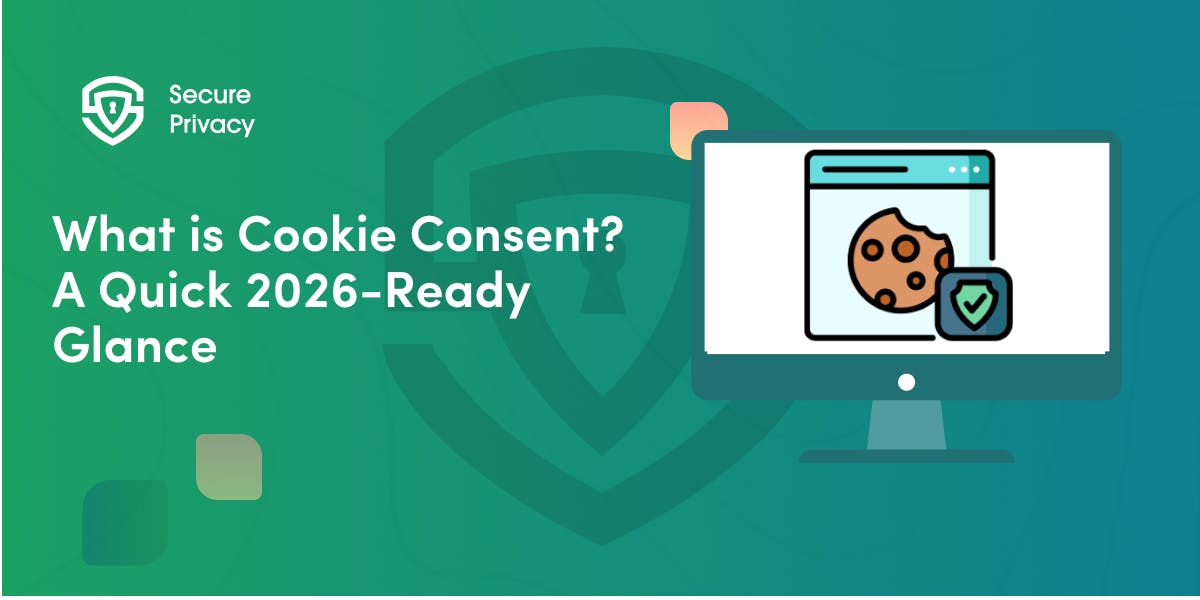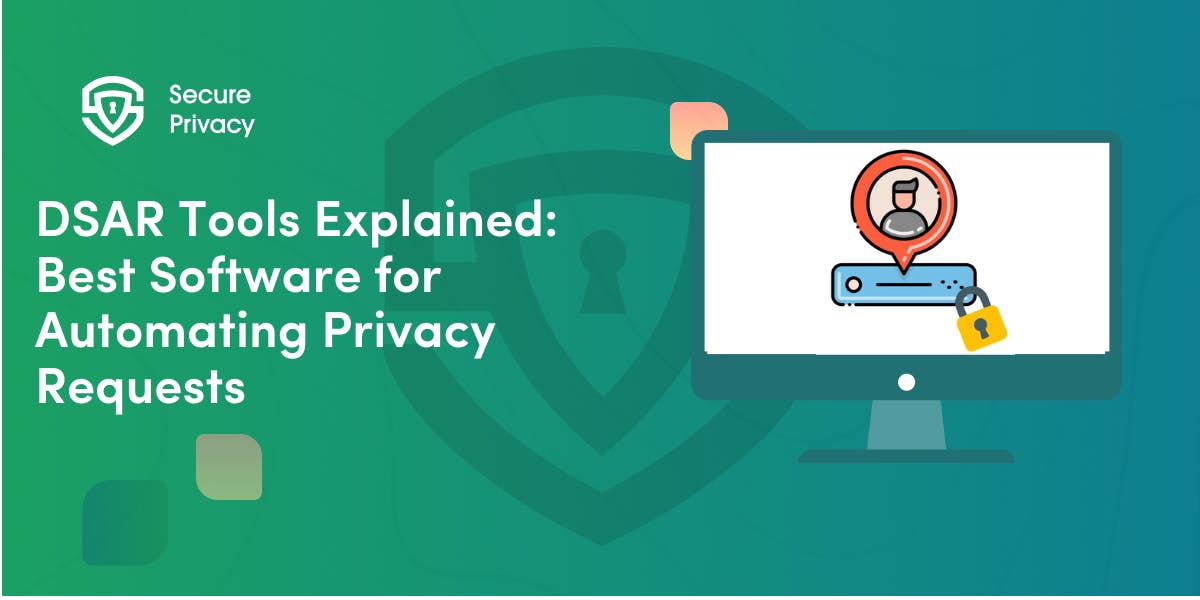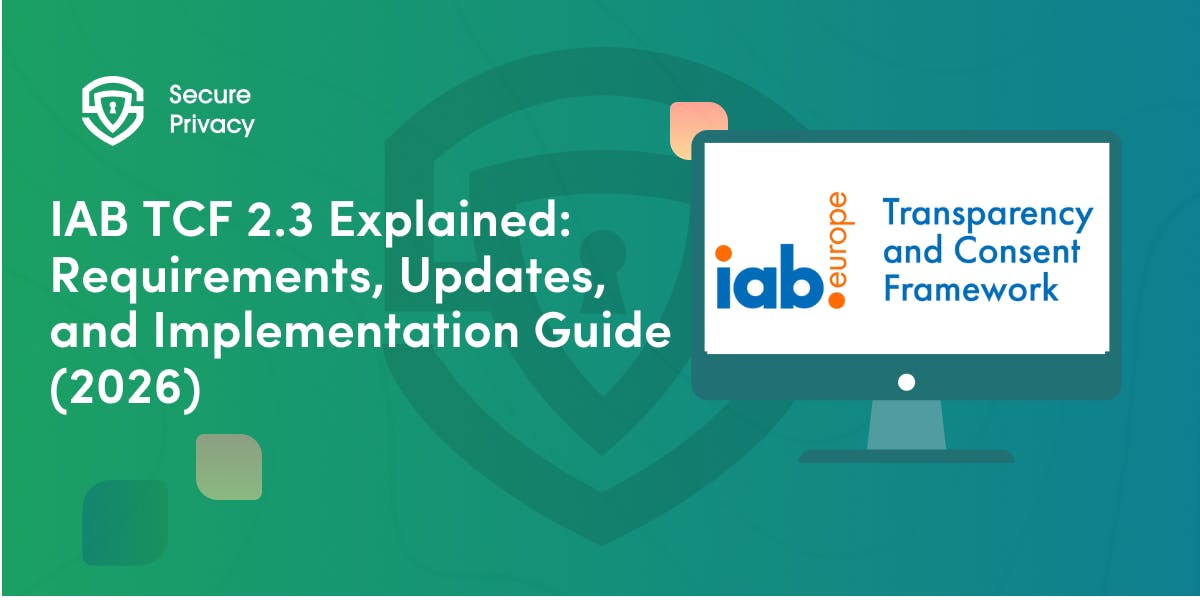First-Party Data Collection & Compliance: Best Practices for GDPR & CCPA in 2025
Your marketing strategy depends on first-party data collection compliance, but navigating the complex web of privacy regulations can feel overwhelming. With GDPR fines reaching €20 million, CCPA penalties expanding under CPRA, and 20+ US states enacting comprehensive privacy laws by 2025, collecting customer data legally has never been more critical—or complicated.
First-party data GDPR requirements have far surpassed simple cookie banners. Modern compliance demands granular consent management, purpose limitation, data minimization, and comprehensive audit trails that satisfy regulators while preserving marketing effectiveness.
In this comprehensive guide, you'll learn how to build compliant first-party data collection strategies that protect your organization from regulatory penalties while maintaining the customer insights necessary for competitive advantage in an increasingly privacy-conscious marketplace.

Prioritizing user privacy is essential. Secure Privacy's free Privacy by Design Checklist helps you integrate privacy considerations into your development and data management processes.
Understanding First-Party Data in the Privacy Era
What Constitutes First-Party Data
First-party data represents information your organization collects directly from customers through owned channels including websites, mobile apps, email campaigns, loyalty programs, customer service interactions, and in-store purchases. Unlike third-party data purchased from external sources, first-party data comes from direct customer relationships under your control.
This data typically includes contact information, purchase history, website behavior gdpr, product preferences, survey responses, and engagement metrics. Compliant data collection focuses on obtaining this information through transparent, lawful means with appropriate user consent and clear purpose statements.
The distinction between first-party and third-party data becomes crucial under modern privacy laws. First-party data generally enjoys more favorable treatment because customers provide it directly to organizations they choose to interact with, creating clearer consent relationships and reduced privacy risks that support first-party data collection compliance.
Why First-Party Data Matters More Than Ever
The deprecation of third-party cookies, increased privacy enforcement, and consumer awareness have elevated first-party data from a marketing preference to a business necessity. Organizations with robust first-party data best practices gain competitive advantages through deeper customer understanding without relying on external data sources.
Privacy regulations actually favor first-party data collection when done correctly. Direct customer relationships enable clearer consent mechanisms, transparent data usage communication, and more precise data minimization compared to complex third-party data sharing arrangements.
Modern consumers increasingly prefer sharing data directly with brands they trust rather than through opaque third-party networks. This trend creates opportunities for organizations that invest in compliant, transparent first-party data strategies.
Legal Foundation: GDPR Requirements for First-Party Data
Lawful Basis and Purpose Limitation
First-party data GDPR compliance begins with establishing clear lawful bases for data processing. Each piece of information you collect must have a specific, documented legal justification such as consent, contract performance, legitimate interest, or legal obligation.
Consent requires freely given, specific, informed, and unambiguous agreement from users. Pre-checked boxes, cookie walls that prevent website access, or bundled consent for multiple purposes violate GDPR requirements. Users must actively opt-in to data collection for each distinct purpose.
Contract basis applies when data processing is necessary for service delivery. Email addresses for order confirmations, shipping addresses for product delivery, and payment information for transaction processing typically fall under contractual necessity rather than requiring separate consent.
Legitimate interest provides lawful basis for certain business activities like fraud prevention, network security, or direct marketing to existing customers. However, organizations must conduct legitimate interest assessments balancing business needs against individual privacy rights and provide clear opt-out mechanisms.
Data Minimization and Purpose Specification
GDPR Article 5 mandates that personal data must be adequate, relevant, and limited to what is necessary for specified purposes. Compliant data collection requires organizations to collect only information directly needed for declared business purposes rather than gathering comprehensive profiles "just in case."
Purpose specification means clearly communicating why you're collecting each type of data before or during collection. Vague statements like "improving user experience" don't meet GDPR standards. Specific purposes like "personalizing product recommendations" or "sending monthly newsletters" provide the clarity regulators expect.
Data retention limitations require organizations to keep personal information only as long as necessary for the stated purposes. Marketing databases cannot indefinitely retain inactive customer records, and analytics data must be deleted or anonymized within reasonable timeframes.
Consent Management and Granularity
Valid GDPR consent requires granular choices for different data processing purposes. Users must be able to consent separately to analytics tracking, marketing communications, product personalization, and social media integration rather than accepting blanket data usage terms.
Consent must be as easy to withdraw as it was to give. One-click unsubscribe mechanisms, persistent preference centers, and clear withdrawal instructions ensure ongoing compliance with user choice requirements.
Consent records must be maintained with detailed documentation including what users were told, when consent was given, and how consent preferences have changed over time. These logs provide essential evidence during regulatory audits or user disputes.
CCPA and State Privacy Law Considerations
CCPA First-Party Data Requirements
CCPA first-party data regulation focuses on transparency and consumer control rather than upfront consent. Organizations must disclose what personal information they collect, how it's used, and whether it's sold or shared with third parties for business purposes.
The "Do Not Sell or Share My Personal Information" requirement applies when first-party data is shared with advertising partners, analytics providers, or other third parties for their commercial benefit. This includes common marketing practices like audience sharing for retargeting or lookalike audience creation.
Global Privacy Control (GPC) signals must be honored automatically when users enable privacy-preserving browser settings. Organizations cannot require manual opt-out processes when users have already expressed privacy preferences through technical means.
Enhanced CPRA Requirements
The California Privacy Rights Act expands CCPA with additional protections for sensitive personal information including precise geolocation, racial or ethnic origin, religious beliefs, health data, and sexual orientation. First-party data best practices must address these enhanced consent requirements for sensitive categories while maintaining CCPA first-party data processing capabilities, via privacy-friendly analytics.
Data retention disclosure requirements under CPRA mandate that organizations publish specific timeframes for keeping different types of personal information. Vague statements about retaining data "as long as necessary" no longer satisfy California requirements.
Risk assessment obligations apply to organizations processing significant amounts of personal information or engaging in high-risk activities like profiling or automated decision-making. These assessments must evaluate first-party data collection practices for potential consumer impacts.
Multi-State Privacy Law Compliance
By 2025, over 20 US states have enacted comprehensive privacy laws with requirements similar to GDPR and CCPA. Virginia's Consumer Data Protection Act, Colorado's Privacy Act, Connecticut's Data Privacy Act, and others create overlapping obligations for first-party data collection compliance. International frameworks, including Chile’s new data protection law, introduce comparable standards for organizations managing first-party data globally.
Universal opt-out mechanisms are becoming standard requirements across state laws. Organizations must implement technical and procedural systems to detect and honor consumer privacy preferences expressed through browser settings, mobile app permissions, or direct requests.
Consumer rights management across multiple states requires standardized processes for handling access, deletion, correction, and opt-out requests. State laws have varying response timeframes and documentation requirements that compliant systems must accommodate.
Harmonized Compliance Strategies
The most effective approach to multi-state compliance involves implementing the highest common denominator of requirements across all applicable jurisdictions. Organizations that meet GDPR standards typically satisfy most US state law obligations while simplifying operational complexity.
Consent management platforms must adapt to different regional requirements while maintaining consistent user experiences. Geo-targeted privacy notices, jurisdiction-specific consent flows, and automated preference synchronization enable scalable compliance across multiple regulatory frameworks.
Documentation requirements vary significantly across jurisdictions, from GDPR's comprehensive processing records to state-specific audit trail obligations. Comprehensive record-keeping systems that capture consent, processing activities, and user interactions provide evidence for all applicable regulatory requirements.
Best Practices for Compliant First-Party Data Collection
Consent Management Platform Implementation
Modern compliant data collection requires sophisticated consent management platforms that go beyond simple cookie banners. These systems must block non-essential tracking until users provide explicit consent, maintain detailed consent logs, and synchronize preferences across all organizational touchpoints.
Granular consent options enable users to choose specific data processing purposes rather than accepting all-or-nothing terms. Analytics tracking, marketing communications, personalization features, and social media integration should each have separate consent mechanisms with clear explanations.
Consent refresh procedures ensure ongoing compliance as privacy preferences change. Regular re-consent campaigns, preference center notifications, and automatic consent expiration help maintain valid legal bases for data processing activities.
Privacy-First User Experience Design
First-party data best practices emphasize transparent, user-friendly privacy interfaces that build trust rather than creating friction. Clear, jargon-free explanations of data usage help users make informed decisions about sharing personal information.
Progressive consent collection spreads privacy choices throughout user journeys rather than overwhelming visitors with comprehensive opt-in requirements during initial website visits. Context-aware consent requests align privacy decisions with relevant product features or services.
Preference centers provide centralized control over all data processing activities with intuitive toggles, clear descriptions, and immediate effect implementation. Users should be able to modify their privacy preferences without contacting customer support or navigating complex account settings.
Data Minimization and Purpose Alignment
Effective data minimization starts with comprehensive audits of current collection practices. Organizations should map every data field to specific business purposes, eliminating unnecessary information requests that create compliance risks without corresponding business value.
Form optimization removes optional fields that don't directly support declared purposes. Email capture forms for newsletter subscriptions shouldn't request phone numbers, job titles, or company information unless those fields serve specific, disclosed functions.
Regular data purging procedures automatically delete information that's no longer needed for its original purpose. Marketing databases should remove inactive subscribers, analytics systems should anonymize old behavioral data, and customer service records should follow documented retention schedules.
Cross-Channel Consistency
First-party data collection compliance requires consistent privacy practices across all customer touchpoints. Website forms, mobile apps, email campaigns, and in-store interactions should all follow identical consent standards and data handling procedures.
API governance ensures that data sharing between internal systems maintains privacy compliance. Customer data platforms, marketing automation tools, and analytics systems must all respect user consent preferences and processing limitations.
Vendor management extends compliance requirements to third-party processors that handle first-party data. Data processing agreements, security assessments, and compliance monitoring ensure that external partners maintain organizational privacy standards.
Technical Implementation Strategies
Server-Side Tracking and Consent Mode
Google Consent Mode v2 enables compliant data collection for analytics and advertising while respecting user privacy choices. When users decline tracking consent, the system sends anonymized signals that preserve measurement capabilities without violating privacy preferences.
Server-side tag management reduces client-side tracking scripts that can compromise privacy compliance. Moving data collection logic to controlled server environments enables better consent enforcement and reduces the risk of unauthorized third-party data access.
First-party cookie strategies minimize reliance on third-party tracking while maintaining personalization capabilities. Organizations can implement analytics, recommendation systems, and user preferences using first-party cookies that respect consent boundaries.
Identity Resolution and Customer Data Platforms
Customer data platforms enable first-party data GDPR compliance through unified consent management and privacy preference enforcement. These systems consolidate customer information from multiple sources while maintaining comprehensive audit trails and consent documentation.
Identity resolution techniques that rely on first-party data avoid privacy risks associated with third-party matching services. Email-based customer identification, account-based tracking, and CRM integration provide customer insights without violating privacy boundaries.
Data activation workflows ensure that privacy preferences influence all downstream marketing and personalization activities. Suppression lists, consent flags, and automated preference synchronization prevent non-compliant data usage across organizational systems.
Automated Compliance Monitoring
Regular compliance audits identify potential violations before they result in regulatory penalties. Automated scanning systems can detect unauthorized tracking scripts, non-compliant consent flows, and data retention violations that manual reviews might miss.
Consent analytics provide insights into user privacy preferences, consent rates, and potential user experience improvements. Organizations can optimize privacy interfaces based on actual user behavior while maintaining compliance standards.
Breach detection systems monitor for unauthorized data access, consent violations, or system compromises that could affect first-party data security. Rapid response capabilities minimize potential impacts and support regulatory notification requirements.
Industry-Specific Compliance Considerations
E-commerce and Retail
E-commerce platforms face complex first-party data collection compliance challenges balancing personalization with privacy requirements. Product recommendations, abandoned cart recovery, and purchase analytics all require careful consent management and purpose limitation.
Payment processing data receives special treatment under most privacy laws as contractually necessary information. However, using transaction data for marketing purposes typically requires separate consent and clear opt-out mechanisms.
Loyalty program data collection must provide clear value exchanges for personal information sharing. Detailed program terms, transparent point systems, and granular privacy controls help maintain customer trust while gathering valuable behavioral insights.
SaaS and Technology Platforms
Software-as-a-Service platforms must distinguish between data processing necessary for service delivery versus optional analytics or improvement activities. User onboarding, feature usage tracking, and performance monitoring may have different consent requirements.
B2B data processing involves complex controller-processor relationships where enterprise customers may determine consent requirements for their end users. Clear data processing agreements and consent management capabilities help SaaS providers support customer compliance obligations.
Product analytics and user experience optimization often require compliant data collection approaches that balance improvement insights with privacy protection. Anonymization techniques, aggregate reporting, and consent-gated detailed tracking provide compliant analytics capabilities.
Healthcare and Financial Services
Regulated industries face additional first-party data best practices requirements beyond general privacy laws. HIPAA for healthcare organizations and financial privacy regulations create specialized consent and security obligations for first-party data.
Sensitive personal information in healthcare contexts requires explicit consent and enhanced security measures. Patient portal data, appointment scheduling information, and health-related communications must follow both privacy laws and industry-specific regulations.
Financial services data processing must balance fraud prevention, regulatory compliance, and privacy protection. Transaction monitoring, credit decisions, and risk assessment activities may have different consent requirements than marketing or customer experience initiatives.
Building Future-Ready Compliance Programs
Regulatory Progress Preparedness
The privacy regulatory landscape continues evolving with new state laws, international regulations, and enforcement precedents. First-party data collection compliance programs must adapt to changing requirements without disrupting customer relationships or business operations.
Federal privacy legislation remains a possibility that could supersede or complement existing state requirements. Organizations should prepare for potential national standards while maintaining current multi-jurisdictional compliance capabilities.
Artificial intelligence and machine learning applications create new privacy compliance challenges for first-party data usage. Algorithmic transparency, automated decision-making oversight, and AI-specific consent requirements represent emerging compliance areas.
Stay ahead of global regulations with our 2026 Privacy Roadmap.
Competitive Advantage Through Privacy Excellence
Organizations that excel at compliant data collection often experience improved customer trust, reduced legal risks, and enhanced brand reputation. Privacy leadership becomes a competitive differentiator in markets where consumers increasingly value data protection and transparent business practices.
Customer acquisition costs may decrease when organizations demonstrate strong privacy practices. Transparent data handling, granular privacy controls, and proactive compliance communication can improve conversion rates and customer lifetime value.
Ready to transform your first-party data collection from compliance burden to competitive advantage?
Secure Privacy's comprehensive platform automates first-party data collection compliance across all major privacy regulations while preserving business effectiveness. Build customer trust through transparent, automated privacy protection designed for modern data-driven organizations.
Frequently Asked Questions
What makes first-party data different from third-party data under privacy laws?
First-party data GDPR requirements focus on direct customer relationships where organizations control collection methods and user communication. Third-party data involves complex sharing arrangements that create additional consent and transparency obligations under most privacy regulations.
Do I need consent for all first-party data collection under GDPR?
First-party data best practices under GDPR require identifying appropriate lawful bases for each type of data processing. Consent is required for non-essential activities like marketing analytics, while contractual necessity covers transaction processing and service delivery data.
How does CCPA affect first-party data collection compared to GDPR?
CCPA first-party data regulation emphasizes transparency and opt-out rights rather than upfront consent. Organizations must disclose data collection practices and honor "Do Not Sell or Share" requests, but don't need explicit consent for most first-party collection activities.
What constitutes compliant consent management for first-party data?
Compliant data collection requires granular consent options for different processing purposes, clear withdrawal mechanisms, and comprehensive consent logging. Users must be able to choose separately for analytics, marketing, personalization, and other data uses with equal prominence for accept and reject options.
How long can I retain first-party data under current privacy laws?
First-party data collection compliance requires documenting retention periods for different data types and purposes. GDPR mandates keeping data only as long as necessary, while CPRA requires publishing specific retention timeframes and justifications for each category of personal information.
What documentation do I need to maintain for first-party data compliance?
Comprehensive first-party data best practices include maintaining consent logs, processing records, data protection impact assessments, vendor agreements, and user request documentation. These records provide essential evidence during regulatory audits and support ongoing compliance monitoring activities.
Get Started For Free with the
#1 Cookie Consent Platform.
No credit card required

What is Cookie Consent? A Quick 2026-Ready Glance
Your website loads. Cookies track users. But without proper cookie consent, you're violating GDPR — risking fines up to €20 million or 4% of global revenue. Cookie consent is the legally required mechanism by which websites obtain explicit user approval before deploying non-essential tracking technologies. This requirement stems from GDPR Article 4(11) and the ePrivacy Directive, mandating that consent must be freely given, specific, informed, and unambiguous.
- Legal & News

DSAR Tools Explained: Best Software for Automating Privacy Requests
You're drowning in data subject access requests. Manual searches through dozens of systems miss regulatory deadlines and expose organizations to fines starting at $2,500 per violation. The solution? DSAR tools — purpose-built software that automates the entire process of responding to data subject access requests, from intake to delivery.
- Legal & News

IAB TCF 2.3 Explained: Requirements, Updates, and Implementation Guide (2026)
Your ad revenue dropped 40% overnight. Google stopped bidding on your inventory. Your DSP partners flagged your traffic as non-compliant. The culprit? An outdated TCF 2.2 consent string after the February 2026 enforcement deadline.
- Legal & News
- Cookie Consent
